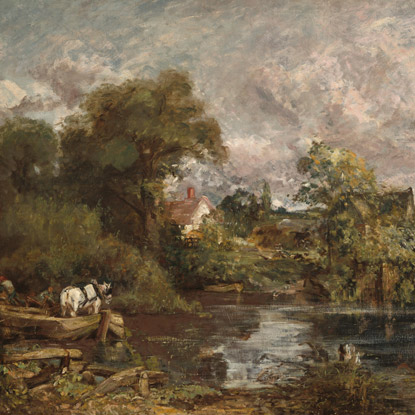Conservators care for a wide range of paintings in the National Gallery’s collection: 3,834 works in total, from 2nd-century Fayum portraits on wood panel to contemporary works with nontraditional structures. These paintings may be created with tempera, oil, distemper (glue-bound paint), wax, acrylic, or mixtures of these media. Supports may include wood panel, fabric, metal, glass, paper, stone, silk, or plastic. Paintings in our collection are conserved to preserve structural stability and aesthetic appearance, taking into account the artist’s original intent and following the guidelines established by the American Institute for Conservation Code of Ethics and Guidelines for Practice.
As an aid in treatment and to better understand the artist’s creative process and materials, conservators study paintings with a variety of technical tools, including close examination in visible and ultraviolet light, as well as with stereobinocular microscopes, x-radiography, and infrared reflectography. This information can aid in attribution, distinguish first versions of paintings from autograph copies, and guide treatment decisions. Our research is published in the technical notes of the National Gallery of Art systematic catalogues and as essays in Gallery exhibition catalogues. The work is also presented in public lectures, in scholarly publications, and at symposia at the Gallery and at other institutions. All treatment involves collaboration with curators and conservation scientists to solve mysteries about a painting’s history and its relationship to other paintings in the artist’s oeuvre, as well as prior treatment, attribution, and the artist’s working procedure.
As part of its commitment to education, the department offers internships and fellowships to conservators in training, and occasionally hosts colloquia. In these meetings, art historians, conservators, and conservation scientists together discuss issues of attribution, artists’ materials, conservation techniques, and methods of technical analysis of paintings.

